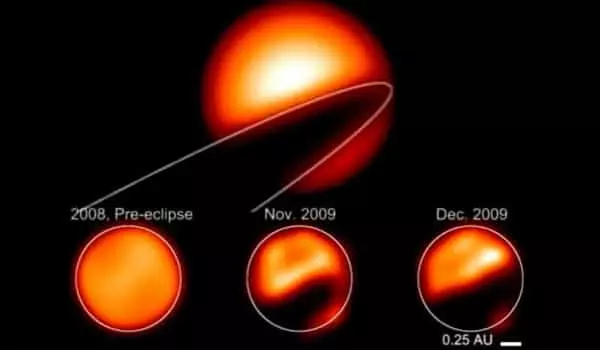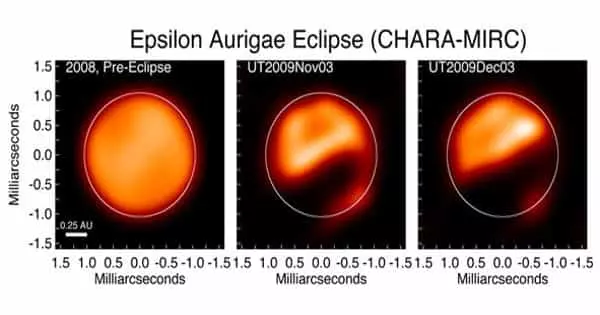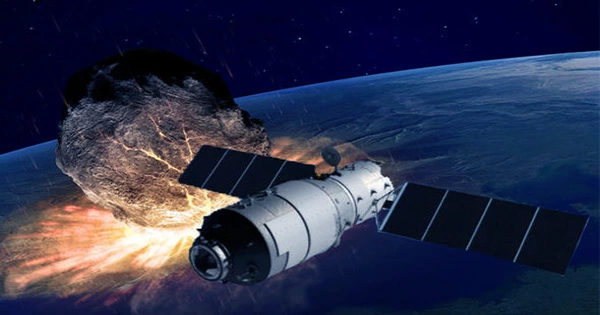Epsilon Aurigae, also known as Maaz or Almaaz, is a yellow supergiant star in the constellation Auriga. It is a multiple star system located in the northern constellation Auriga, the Charioteer. It is thought to be 2,000 light-years away from Earth in the constellation Auriga. The primary star is a yellow-white star that is approximately 135 times the size of the Sun. The secondary star, which was once thought to be thousands of times the size of the Sun, is a hot main-sequence star surrounded by a massive disk of gas that eclipses the primary star for two years.
When German astronomer Johann Heinrich Fritsch observed Epsilon Aurigae in 1821, he suspected it was a variable star. Later observations by Eduard Heis and Friedrich Wilhelm Argelander confirmed Fritsch’s initial suspicions and brought the star to public attention. Hans Ludendorff, on the other hand, was the first to conduct extensive research on it. His research revealed that the system was an eclipsing binary variable or a star whose light dims when its partner obscures it.
It is surrounded by a thick dusk cloud and is orbited by a binary star. The dust cloud emits only infrared light. It’s an unusual eclipsing binary system made up of an F0 supergiant and a companion that’s widely assumed to be a massive dark disk orbiting an unknown object, possibly a binary system of two small B-type stars. The system’s distance from Earth is still being debated, but data from the Gaia spacecraft puts it at around 1,350 ±300 light-years away.

The dust cloud was thought to be the largest star known at the time, but it was later revealed that it was not a star. VY Canis Majoris, and later, Stephenson 2-18, were discovered to be the largest stars. Every 27 years, the brightness of Epsilon Aurigae decreases from an apparent visual magnitude of +2.92 to +3.83. This dimming lasts between 640 and 730 days. Aside from the eclipse, the system has a low amplitude pulsation with a non-consistent period of around 66 days.
Another theory holds that the dusk cloud is a black hole, but this theory is no longer accepted. The eclipsing companion of Epsilon Aurigae has been the subject of much debate because it does not emit as much light as would be expected for an object of its size. The most widely accepted model for this companion object as of 2008 is a binary star system surrounded by a massive, opaque disk of dust; theories speculating that the object is a large, semitransparent star or a black hole have since been rejected.
The Epsilon Aurigae system’s nature is unknown. It has long been suspected to be made up of at least two components that undergo periodic eclipses with an unusual flat-bottomed dimming every 27 years. Early explanations involving extremely large diffuse stars, black holes, and strange doughnut-shaped discs are no longer accepted. There are now two main explanations for the observed characteristics: a high mass model in which the primary is a yellow supergiant of around 15 M☉, and a low mass model in which the primary is about 2 M☉ and a less luminous evolved star.
















